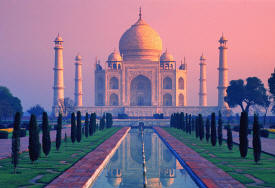Up close and very personal
Hindustan Times
November 30, 2011
It is in the nature of large nations to step on each other’s toes. It is also in the nature of large nations that they quickly shake hands and move on. There is a simple reason for this: if they let the small things get them excited, they will be endlessly and expensively preparing for will-o’-the-wisp geopolitical conflicts. India and China understand this theoretically but are struggling to ingrain this in the timber of their day-to-day relations. The recent cancellation of the bilateral border negotiations because the Dalai Lama was about to speak in New Delhi at the same time is a case in point. The incident is politically of little importance. Why it became a cause celebre is more interesting. The answer, it seems, is that the frayed relationship between India and China has made public opinion in both countries hypersensitive to any incident where there is no unanimity between the two countries.
This is a dangerous development. In the minds of Indians and Chinese, the two have now sparred over India’s negligible presence in the South China Sea, over a Chinese diplomat’s argument with a journalist, various internet maps and now a religious conference. While symbolically significant, none of these impinge on core security concerns and barely count as the stuff of realpolitik. This is not to say there are no major outstanding issues between the two Asian giants. China has provided no clarity as to why it shifted a five-decade old policy on Kashmir and began issuing stapled visas. It has given no explanation as to why it scaled up its rhetoric on Arunachal Pradesh over the past three years. These are the sort of issues India and China need to be focusing on. The two sides have become so thin-skinned that it is becoming increasingly difficult for the two governments to seek conventional diplomatic solutions to their differences.
There is little evidence that India and China will ever be very close. Those in India who have called for a Chindia alliance or seen promise in such absurdities as the Russia-India-China triangle are mentally based on a planet that is not Earth. However, this does not mean India and China are destined to be enemies or rivals in any sense other than the economic. Both governments would prefer not to complicate their local geopolitical situation by making a hostile entity of the other. What would be best would be a major political breakthrough on both sides over one of their many outstanding disputes. The other would be a focus on managing toe-stepping incidents in a more transparent and less excitable manner — both at the State and civil society levels.
